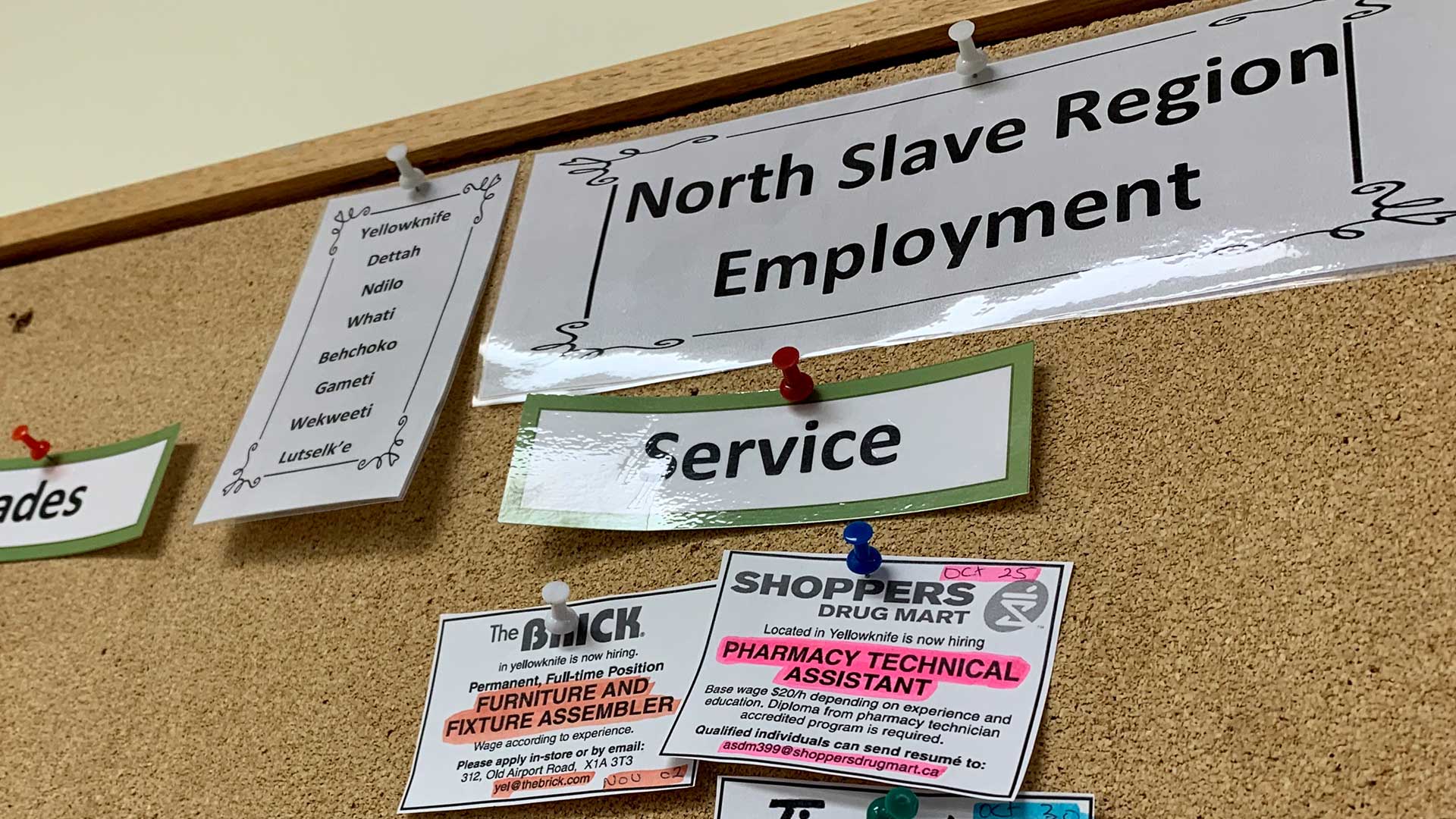When Fred Naedzo was laid off from his construction job last week he knew he had to act fast to be able to feed his three kids.
“I think it was because of COVID-19, there was a shortage of work, so I’m applying for employment insurance. I’ll get by with it,” Naedzo said.
He’s taking it day by day.
“I feel frustrated, a lot of planning to make ends meet and do what I can to earn some money for family. I think it would be good for the government to ask questions, survey, what the people need,” Naedzo said.
He went to the N.W.T. Career Centre in downtown Yellowknife, a resource he had used numerous times in the past.
“Because I lost my phone this is the only place I can go to to get information about government aid and Service Canada,” he said.
The doors to the not-for-profit centre have stayed open the entirety of the Covid-19 pandemic and became the primary service referral for Service Canada in the north slave region.

It’s the only computer lab and in-person application support in the city. From open to close every computer, printer and phone in the centre is occupied.
Gordon Ross the manager of the centre, said with employment support services limiting service to online and hotlines the bottleneck burden inundated the career centre to serve more clients with immediate needs.
“We have been able to help mitigate the direct assistance for that application support. Being able to ask the right questions at the right time and being able to provide the streamline approach to the application,” Ross said.
In a technical briefing on Oct.19, Caroline Wawzonek, minister of Finance told media the number of jobs in the territory is expected to return to 90 per cent of pre-pandemic levels by the end of the year.
However, she admitted the quality of the work may suffer.
“There’s some concern that some of the jobs that we see returning may be changing in their structure. What I mean by that is the number of hours worked, the number of full time vs part time etc.,” Wawzonek said.
Ross agreed with minister but added said he’s noticed a drop in the number of jobs advertised since the pandemic began.
“Keeping in mind certain jobs advertised are only being advertised to meet certain requirements, rather than having a position to be filled. Whether that’s looking for wage subsidy benefits, or employee subsidy benefits, so the actual uptick in hiring for our clientele is somewhat minimal,” Ross said
The minister noted that the territory did not suffer as many losses as originally anticipated.
“The Northwest Territories is comparably insulated from some of the more significant job loss numbers because of the size of the government sector,” Wawonek said.

According to the N.W.T. Bureau of Statistic, 47 per cent of the work force is employed in the public sector where no layoffs have taken place.
Despite the N.W.T not suffering job losses as great as the minister expected, 11,690 of the territory’s 44,826 residents collected $101 million in Canadian Emergency Response Benefit (CERB) payments from April to the end of September – a higher rate than both the Yukon and Nunavut.
In 2020, 4,000 lost their jobs – of that, 1,000 were held by non-N.W.T. residents.
Even if 3,000 N.W.T. residents lost their jobs, it doesn’t explain the 8,690 residents who applied for CERB.
The service sector has accounted for 80 per cent of positions lost as tourism and retail sales plummeted.










